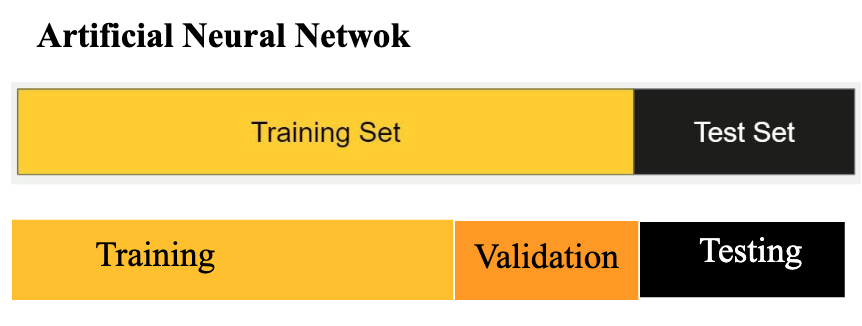Lecture 19 - Machine Learning II
1/5
There's no tags or description
Looks like no tags are added yet.
Name | Mastery | Learn | Test | Matching | Spaced |
|---|
No study sessions yet.
6 Terms
Artificial Neural Network
A computer algorithm inspired by how neurons in our brains work where the system is made of a number of simple, highly interconnected processing elements which process information by their dynamic state to respond to external input
So it goes through a parallel processing of inputs rather than sequential
There are many different ANNs, they’re characterised by their:
Type (feedforwards, etc)
Structure (backpropagation, etc)
Other learning algorithms it may use
Can be simple to extremely complicated (and powerful) such as convolution (where nearby “neurons” can affect one another) and deep learning algorithms (multiple neural hidden layers)
Applications of ANNs
Pattern association & classification, regularity detection
Image processing, speech analysis
Quality assurance
Robot steering
And many more
They can used to approximate any continuous and discontinuous function
Elements of ANNs
Neuron/Node H (in hidden layers)
Inputs x
Outputs y
Weight w (will tell % to take from inputs)
Axons
At each node, transfer functions use all the inputs, xi with varying weights wi and translate them into an output y
Can be any function (linear, sigmoid, hyperbolic, gaussian, etc)
We can choose the functions and test different ones
Neural Architecture
The number of neurons per layer (which is hidden), the number of layers, and the specified connections for each layer
The more hidden layers, the more complex behaviour it can emulate

Training ANNs
The dataset will be subdivided into three sections rather than the normal two (training & testing). There needs to be an addition validation dataset, which is required to stop the training process
A training instance is selected from the training dataset and inputted into the ANN
Inputs are propagated through the network to get an output
Error of output is computed (desired output - network output)
Error is backpropagated through the network to adjust weights
Back to step 1, another training instance is processed, until all are processed
In the end, the resulting trained ANN is checked with the validation dataset. If the final ANN is previous than the best, it is saved
Afterwhich, it’ll be tested on the unseen testing dataset to assess performance
Pros & Cons of ANNs
Pros:
Can handle a partial lack of system understanding
Can create “adaptive” models (that can “learn”)
Very powerful
Cons:
Results are as good as the training dataset (true for any algorithm honestly)
Complicated, results in a black box and doesn’t help us understand
Can be slow, energetically intensive, and expensive
Struggle with extremes